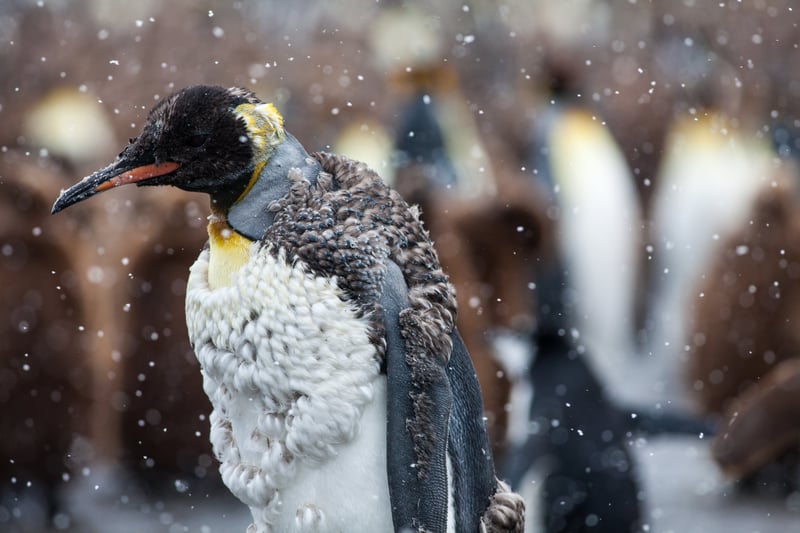
This is a disaster for our wild planet—and possibly our own health.
A king penguin in the Antarctic has died from suspected bird flu (H5N1), according to reports from The Guardian. While the cause of death still has to be confirmed, this could spell disaster for these remote populations of wild animals who are currently clustering together in large numbers for breeding season.
In addition to this king penguin, at least one gentoo penguin has been confirmed to have died from H5N1 on the Falkland Islands. More than 20 gentoo penguin chicks have either died from bird flu or are exhibiting symptoms.
Heartbreakingly, this isn’t the first time bird flu has infected wild animals and unfortunately, it won’t be the last.
This tragic news comes just weeks after the Alaska Department of Environmental Conservation confirmed the death of a polar bear from Highly Pathogenic Avian Influenza (HPAI)—the type of H5N1 that causes more severe disease—in the Arctic.
More than 500,000 seabirds have died in South America—with pelicans, boobies, cormorants, and penguins most heavily impacted—while elephant seals have been dying en masse in the Antarctic since the virus appeared in the region.
Ed Hutchinson, a molecular virologist at the MRC-University of Glasgow Centre for Virus Research, told The Guardian:
“The arrival of this H5N1 virus in the Antarctic towards the end of last year rang alarm bells because of the risk it posed to wildlife in this fragile ecosystem. And while it is very sad to hear reports of penguins dying … it is unfortunately not at all surprising.”
Highly Pathogenic Avian Influenza continues to spread rapidly throughout the globe, killing millions of birds and thousands of wild mammals in the process.
In fact, Finland slaughtered over 125,000 mink and foxes in August 2023 due to fears bird flu would mutate and more effectively jump to humans after it was reported in more than two dozen Finnish fur farms in July and August 2023 alone. Concerns about the risks mink farms pose in the spread of zoonotic diseases is one reason United States legislators have introduced the Mink VIRUS Act to end mink farming for fur in the US.
Highly Pathogenic Avian Influenza (HPAI) is extremely contagious among birds raised in factory farms, like chickens, geese, turkeys, and ducks. Due to the massive number of animals in crowded into factory farms, diseases such as HPAI H5N1 can thrive, leading to millions of domestic birds being killed to stop the spread of an outbreak.
As of late November, over 8.1 million factory-farmed birds were killed in Ohio in 2023 due to bird flu concerns, according to USA Today, and it has cost the US government over $660 million. Nationwide, more than 65 million individual birds have been slaughtered since 2022 in an effort to stop or slow the spread of bird flu.
Factory farms, whether they’re filled with domestic animals raised for food or wild animals killed for their fur, are breeding grounds for diseases. Many scientists predict they could be ground zero for a future global pandemic.
Now more than ever, we need to rethink the way we interact with all animals.
By shifting to more sustainable and kinder practices, such as eliminating or reducing our consumption and use of animals, we can end the largest source of animal cruelty on the planet: factory farming.
Take action to ban factory farming today.